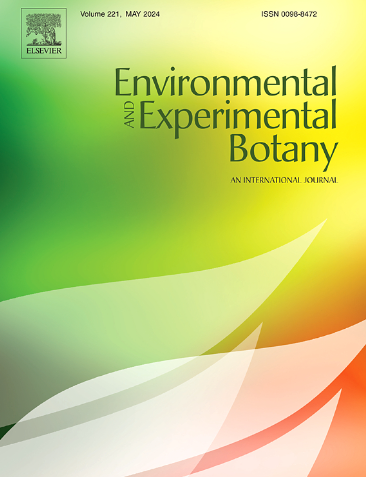目前对水稻热休克蛋白介导的热应激反应的了解
IF 4.7
2区 生物学
Q2 ENVIRONMENTAL SCIENCES
引用次数: 0
摘要
全球变暖严重影响作物生产,对粮食安全构成重大威胁。作为世界上最重要的粮食作物之一,水稻(Oryza sativa L.)的产量和品质经常受到热胁迫(HS)的影响。因此,阐明HS的分子机制,培育耐热水稻品种具有重要意义。为了深入了解热休克蛋白(HSPs)调控的功能,研究了水稻对热休克反应的分子机制。本文综述了热休克蛋白的研究现状及其在提高水稻抗高温胁迫能力中的作用。并通过顺式作用元件探讨热休克蛋白与植物激素之间的串扰。此外,在水稻基因组中共鉴定出20个热敏感蛋白,在耐热水稻品种的发育中发挥关键作用。蛋白质-蛋白质相互作用(PPIs)网络分析提出了15个关键热休克蛋白作为适应策略的模型。基因本体(GO)富集分析表明,这些关键热休克蛋白在水稻对HS的响应中发挥了重要作用。总之,这些策略有可能增加水稻对HS的抗性,为进一步研究提供了新的概念和视角。本文章由计算机程序翻译,如有差异,请以英文原文为准。
Current understanding of heat shock protein-mediated responses to heat stress in rice
Global warming significantly impacts crop production and poses a major threat to food security. Indeed, as one of the world’s most important food crops, the yield and quality of rice (Oryza sativa L.) are frequently affected by heat stress (HS). Therefore, clarifying the molecular mechanism of HS and cultivating heat-tolerant rice varieties is of critical importance. To gain insight into the heat shock proteins (HSPs) regulated functions, molecular mechanisms have been explored in rice response to HS. This study synthesizes current research on HSPs and their roles in improving rice tolerance to HS. It also explores the cross-talk between HSPs and phytohormones through cis-acting elements. Additionally, a total of 20 HSPs were identified in the rice genome as playing key roles in the development of heat-tolerant rice varieties. Protein-protein interactions (PPIs) network analysis proposed 15 key HSPs as a model for adaptation strategies. Gene ontology (GO) enrichment analysis revealed that these key HSPs played important roles in rice response to HS. Together, these strategies have the potential to increase rice's resistance to HS, offering fresh concepts and perspectives for further study.
求助全文
通过发布文献求助,成功后即可免费获取论文全文。
去求助
来源期刊

Environmental and Experimental Botany
环境科学-环境科学
CiteScore
9.30
自引率
5.30%
发文量
342
审稿时长
26 days
期刊介绍:
Environmental and Experimental Botany (EEB) publishes research papers on the physical, chemical, biological, molecular mechanisms and processes involved in the responses of plants to their environment.
In addition to research papers, the journal includes review articles. Submission is in agreement with the Editors-in-Chief.
The Journal also publishes special issues which are built by invited guest editors and are related to the main themes of EEB.
The areas covered by the Journal include:
(1) Responses of plants to heavy metals and pollutants
(2) Plant/water interactions (salinity, drought, flooding)
(3) Responses of plants to radiations ranging from UV-B to infrared
(4) Plant/atmosphere relations (ozone, CO2 , temperature)
(5) Global change impacts on plant ecophysiology
(6) Biotic interactions involving environmental factors.
 求助内容:
求助内容: 应助结果提醒方式:
应助结果提醒方式:


